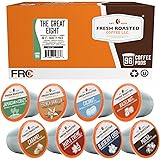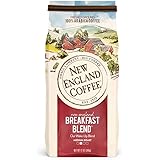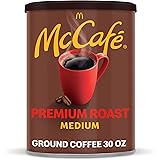Mastering the Basic Espresso Recipe: Your Guide to Perfect Shots
Achieving a truly outstanding espresso shot at home is a rewarding pursuit. The video above provides an excellent visual overview of the essential steps. It highlights key metrics for crafting your brew. For instance, a standard double espresso shot often targets a 1:2 coffee-to-espresso ratio, meaning 14 grams of ground coffee yields approximately 28 grams of liquid espresso. This foundational understanding is crucial. Let’s delve deeper into each component of this fundamental espresso recipe, ensuring every cup you pull sings with flavor.
Understanding these precise measurements helps unlock superior taste. Consistent results stem from careful attention to detail. This guide builds on the video’s instructions, offering richer context and actionable insights for your journey toward the perfect espresso.
Precision Dosing: How Much Coffee to Use?
The journey to the perfect espresso recipe starts with the coffee dose. This refers to the amount of dry coffee grounds you use. The video suggests traditional doses: 7 grams for a single shot, 14 grams for a double, and 21 grams for a triple. These are classic starting points.
However, modern specialty coffee preparation often favors slightly higher doses for double shots. Many baristas use 18-20 grams of coffee. This offers a more robust flavor profile. More coffee generally means a stronger, richer final beverage. Think of it like cooking: more herbs add more intensity. Weigh your dose every time. This ensures unparalleled consistency in your espresso making.
Choosing Your Portafilter Basket
Your portafilter basket must match your dose. The video mentions a “VST-18gr” basket. VST baskets are precision-engineered. They offer consistent hole size and distribution. This allows for more even extraction. If you use 18 grams of coffee, an 18-gram basket is ideal. Using a smaller basket for too much coffee causes channeling. Using a larger basket for too little coffee creates empty space. Both lead to poor extraction. Select the correct basket size for your chosen dose. It is a critical, often overlooked step in your espresso recipe.
Mastering the Yield: How Much Espresso to Produce?
After dosing, you determine your yield. Yield is the weight of the liquid espresso in your cup. It’s not about volume, but weight. You use a scale for accuracy. The video clearly outlines three common ratios:
- Ristretto (1:1 ratio): For every 1 gram of coffee, you extract 1 gram of espresso. This creates a highly concentrated shot. It is thick and intense. It bursts with strong flavors. Imagine a tiny, potent flavor bomb.
- Espresso (1:2 ratio): This is the standard. For 1 gram of coffee, you aim for 2 grams of espresso. If you use 14 grams of coffee, target 28 grams of liquid espresso. This ratio offers balance. It is sweet with good body. It’s the go-to for many coffee lovers.
- Lungo (1:3 ratio): Here, 1 gram of coffee yields 3 grams of espresso. A longer extraction time occurs. This results in a lighter-bodied shot. It often brings out more bitterness. It can also highlight delicate aromatics. Think of it as a lighter-bodied, more stretched-out brew.
Each ratio offers a distinct experience. Experiment with different yields. Discover your preferred taste profile. Always weigh your output. This allows precise control over your espresso recipe. It helps you replicate excellent shots consistently.
The Art of the Grind: Finding the Right Size
Grind size is perhaps the most critical variable. It controls how quickly water flows through the coffee bed. The video simply states “grind the coffee to espresso size.” But what does that mean? Espresso grind is very fine. It resembles powdered sugar or fine table salt. It should feel gritty, not powdery. It must not feel coarse like sand for French press.
A fine grind increases surface area. Water interacts more thoroughly with the coffee. This slows down the flow. A coarse grind allows water to rush through too quickly. Think of it like a dam. Too many large rocks, water flows freely. Too much fine silt, water slows to a trickle. For espresso, we need that perfect balance. This ensures optimal extraction. Adjusting your grinder is key to perfecting your espresso recipe. Even tiny adjustments matter greatly.
The Importance of Tamping: Level and Firm
Tamping compresses the coffee grounds. It creates a uniform puck. The video emphasizes “ensure a level tamp.” This is paramount. An uneven tamp causes channeling. Water will find paths of least resistance. It flows unevenly through the coffee bed. This leads to underextraction in some parts. It causes overextraction in others. Imagine compacting soil for a plant. You want even pressure. This prevents roots from growing in only one direction. Apply firm, even pressure. Tamp until the grounds resist further compression. A level puck is a consistent puck. It is fundamental to a good espresso recipe.
Brew Time: The Golden Window
Once everything is set, it’s time to brew! The video reminds you to “weigh your shots.” This is vital for timing and yield accuracy. For a standard double espresso (1:2 ratio), aim for a brew time of 25-30 seconds. This duration starts from when you activate the pump. It ends when your target yield is reached. This timeframe is a general guideline. It is not a rigid rule. Some coffees taste better slightly shorter. Others might excel with a few extra seconds. Consider it a starting point for your espresso recipe fine-tuning.
If your shot runs too fast (e.g., 15 seconds), your grind is likely too coarse. If it runs too slow (e.g., 45 seconds), your grind is too fine. Use brew time as a primary indicator for grind adjustments. This feedback loop is essential for refining your espresso.
Taste and Adjust: Decoding Your Espresso Shots
The final, most crucial step: taste! The video provides an excellent “Adjusting Grind Size Guide.” This guide is your compass. It helps you navigate the complex world of espresso flavors.
Underextracted Espresso (Grind Finer)
An underextracted shot hasn’t had enough contact time with water. The desirable compounds haven’t fully dissolved. Flavors might be:
- Sour: A sharp, unpleasant acidity. Think unripe fruit, not bright citrus.
- Salty: A distinct saline taste.
- Quick Finish: Flavors disappear rapidly. It leaves no lingering aftertaste.
- Thin Body / Dilute: Lacks richness and mouthfeel. It tastes watery.
- Dull Flavours: Muted, uninteresting taste.
If you experience these notes, your coffee is underextracted. The video correctly advises to “GRIND FINER.” A finer grind slows water flow. It increases contact time. This allows for more extraction of desirable flavors. It is a key adjustment in your espresso recipe.
Overextracted Espresso (Grind Coarser)
An overextracted shot means too much contact time. Undesirable compounds have dissolved into your cup. These compounds are often bitter. Flavors might be:
- Bitter: An acrid, lingering bitterness. Like burnt toast, not pleasant cocoa.
- Harsh / Sharp: An aggressive, unpleasant sensation on the palate.
- Dry / Chalky Finish: Leaves your mouth feeling parched. This is known as astringency.
- Dull Flavours: Overpowering bitterness masks nuanced tastes.
If your shot exhibits these characteristics, it’s overextracted. The video’s advice is clear: “GRIND COARSER.” A coarser grind speeds up water flow. It reduces contact time. This prevents the dissolution of unwanted bitter compounds. It helps achieve a balanced espresso recipe.
The Sweet Spot: Awesome Espresso
The goal is the “Sweet Spot.” This is where flavors are:
- Sweet: Natural sugars in the coffee shine through.
- Balanced: Acidity, bitterness, and sweetness harmonize perfectly.
- Rich Flavours: Complex, deep, and satisfying taste.
- Good Clarity: Individual flavor notes are discernible.
- Smooth: A pleasant, velvety mouthfeel.
This “Awesome!” taste indicates an ideal extraction. Your espresso recipe is dialed in. Keep brewing, tasting, and adjusting. This iterative process refines your home barista skills. It unlocks the full potential of your coffee beans.
Mastering the basic espresso recipe requires practice and patience. Each variable – dose, yield, grind, tamp, and time – plays a vital role. Using a scale for both coffee and liquid espresso is non-negotiable. It provides the data needed for precise adjustments. Continuously taste your shots. Use the video’s guide to inform your adjustments. Soon, you will consistently pull delicious, balanced espresso shots at home.







